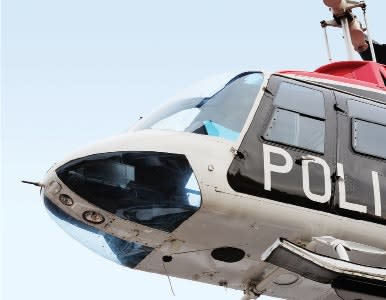9. When dealing with missing persons, physical descriptions are critical. Height, weight, age, hair color, and clothing are standard. However, other descriptors that are more visible from the air are often omitted. For example, does the person use a cane or walk with a limp? Think in terms of what visual indicators a flight crew can use to differentiate them from other people in the area.
10. Ground units update each other constantly. However, when they use cell phones, instant messaging, or other methods that don't come across the radio, communication can break down and waste time. Every wasted minute in the air works against the agency in the long run. It ties up the air assets unnecessarily, expends costly fuel, and also puts time on the aircraft parts. This hastens mandatory maintenance, which is based on flight hours.
11. Flying daytime operations are usually done with magnification devices. At night, the flight crew uses thermal imaging or I2 night vision goggles (NVGs). With thermal imaging the flight crew sees in black and white and with NVGs it's usually green. In other words, calling out that the suspect is wearing a red shirt means nothing to someone using either one of these types of technology.
12. Please don't ask the flight crew how many suspects are in the house. To date there are no available camera systems that can see through things. They are also significantly hindered by fog or moisture. The closer the temperature of the environment is to that of the item the flight crew is searching for, the harder it is to see the heat signature.
13. Because night operations are different, flight crews prefer not to use the spotlight unless absolutely necessary. Using a spotlight prevents the use of thermal imagery, canceling out its effectiveness. If the spotlight is activated, the flight crew runs the risk of losing contact because the camera system takes time to reset.













